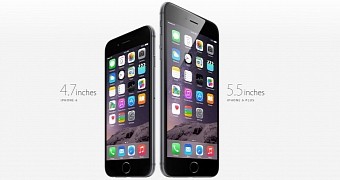Apple is working on its next-generation iPhone models, which we expect to see arrive into the wild later in 2015, and rumors regarding them have already started appearing online.
According to recent speculation, the Cupertino tech giant will be rolling out not two but three iPhone models this year. Interestingly enough, we were told that Apple was getting ready to produce a successor for its 2013 plastic-made iPhone 5c.
Seemingly, the Cupertino tech giant still believes customers could be interested in purchasing a cheaper handset arriving with a small form factor (4-inch says the rumor mill). The iPhone 6 Plus was greeted with heavy criticism upon arrival, but eventually the animosity died down and Apple moved on to achieve record sales in the quarter during which the new phone was launched.
Apple won't be refreshing its iPhone 5c after all
However, the reality of things might turn out to be a bit different. Well-connected Apple analyst Ming-Chi Kuo claims that Apple will abstain from launching a 4-inch iPhone model this year. So, instead of three versions, we’re actually going to see only two (as seen at BGR).
On top of that, even if the most recent hearsay claimed that Apple’s upcoming smartphones would be called iPhone 6s, iPhone 6s Plus and iPhone 6c, Kuo comes to rectify the info saying that it’s quite possible that Apple will go directly to iPhone 7 while nomenclature is concerned.
The reason for the jump is that the phones will apparently boast a major new feature which is considered a major step above previous models.
As we told you in an earlier piece, Apple is expected to implement a capacitive Force Touch sensor on its new smartphone, as it did with the Apple Watch.
Recent speculation claimed that only the premium iPhone “6s Plus” model would be getting the treatment, but maybe both handsets will be updated with Force Touch technology.
Force Touch on the iPhone will differ from what we currently know
Kuo goes on to explain that the Force Touch technology on the iPhone will be quite different from the one we see in the new MacBook and Apple Watch, as the company has to face a few challenges.
The technology applied on the new iPhone models won’t be able to directly detect the pressure applied by the fingers, but will monitor the contact area on which the finger touches the screen in order to discern the amount of pressure applied.
To achieve this, Apple will have to insert the Force Touch sensor either between the cover lens and the In-cell touch panel or under the In-cell touch panel’s backlight.
In the first situation, Apple has to figure out how to produce the transparent Force Touch sensor, while in the second scenario, the company will need to find a way to reduce signal interference from the in-cell touch panel.
Kuo explains that producing a transparent Force Touch sensor is deemed more difficult, so we should expect the next-gen iPhones to adopt the second setup.

 14 DAY TRIAL //
14 DAY TRIAL //